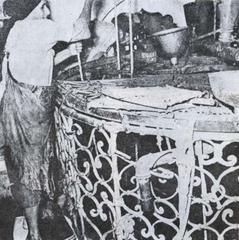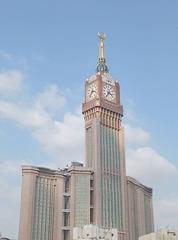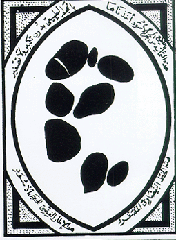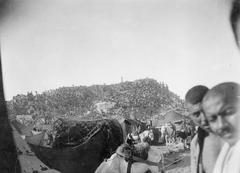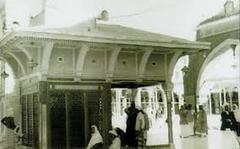
Zamzam Well Visiting Hours, Tickets, and Complete Guide to Mecca’s Historic Site
Date: 14/06/2025
Introduction
The Zamzam Well, situated within the Masjid al-Haram in Mecca, Saudi Arabia, is one of the Islamic world’s most revered sites. Its deep spiritual and historical significance draws millions of pilgrims each year, especially during Hajj and Umrah. This guide offers comprehensive information on the Zamzam Well’s origins, religious importance, visiting hours, practical tips, and nearby historical attractions. Whether you are planning your pilgrimage or seeking cultural insight, this article will help you prepare for a meaningful visit to this blessed site. (Wikipedia; Islamidawahcenter)
Historical Background and Religious Significance
Origins and Abrahamic Narrative
The Zamzam Well’s origins are rooted in the Abrahamic tradition. According to Islamic belief, Prophet Ibrahim (Abraham) left his wife Hajar (Hagar) and their infant son Isma’il (Ishmael) in the barren valley of Mecca as part of a divine command. When their water ran out, Hajar desperately ran between the hills of Safa and Marwah searching for sustenance. In response to her faith and perseverance, Allah sent the Angel Jibril (Gabriel), who caused water to gush forth from the ground—thus creating the Zamzam Well. This event is referenced in the Quran and commemorated during the Hajj and Umrah rituals. (Islamidawahcenter; Wikipedia)
Spiritual and Ritual Importance
The Zamzam Well is a symbol of divine mercy and providence. It is located about 20–21 meters east of the Kaaba, the holiest site in Islam. Drinking Zamzam water is an essential act of worship during pilgrimage, often accompanied by special supplications seeking health, forgiveness, and spiritual blessings. The Sa’i ritual—walking between Safa and Marwah—directly reenacts Hajar’s search for water, reinforcing the well’s significance within Islamic practice. (voyeglobal.com; saudipedia.com)
Development, Preservation, and Distribution
Historical Stewardship
Over the centuries, the Zamzam Well has been carefully protected and maintained by various Islamic states and dynasties. After a period of neglect, it was rediscovered and restored in the 6th century CE by Abd al-Muttalib, the Prophet Muhammad’s grandfather. The responsibility for the well’s care, known as “siqaya,” became hereditary among his descendants. Successive rulers, including the Abbasids and Ottomans, undertook architectural enhancements and ensured the well’s accessibility for pilgrims. (Explorifying; Islamonweb)
Modern Infrastructure
Today, the well is covered and no longer directly visible to the public for preservation and hygiene. Zamzam water is distributed through hundreds of taps and dispensers throughout Masjid al-Haram. The Saudi authorities rigorously test and maintain the water to ensure purity and safety, and advanced pumping systems provide water to millions of pilgrims year-round. (ESAudiVisa; Audiala)
Physical and Scientific Features
The Zamzam Well is approximately 35 meters deep, with underground streams converging from the direction of the Kaaba and the surrounding hills. Scientific studies confirm the water’s mineral-rich properties and its sustainable aquifer system, which has supplied pilgrims for over 1,400 years. Laboratory tests are conducted daily to guarantee its safety, and the water’s unique composition is widely regarded as both nourishing and restorative. (Explore Islam; Islamonweb)
Visiting Zamzam Well: Hours, Tickets, and Practical Information
Visiting Hours
The Zamzam Well area within Masjid al-Haram is open 24 hours a day, year-round, to accommodate the continuous influx of worshippers. However, access points to Zamzam dispensers may be regulated during peak times, such as Hajj and Ramadan, to ensure safety and crowd management. (MyTravelation)
Entry Fees and Tickets
There is no ticket or entry fee required to access Zamzam water. Entry to Masjid al-Haram is free, but only Muslims are permitted to enter Mecca and the mosque. During Hajj season, additional permits are required. (ESAudiVisa)
Accessibility
The mosque is equipped with ramps, elevators, and wide corridors to accommodate visitors with mobility challenges. Special prayer areas and Zamzam dispensers at various heights ensure accessibility for the elderly, disabled, and children. (Audiala)
Etiquette and Behavior
- Dress modestly: Men should wear simple, loose-fitting clothing; women should wear abayas and headscarves.
- Maintain silence and reverence.
- Do not push or rush at water points.
- Photography and video recording are strictly prohibited inside Masjid al-Haram, including at Zamzam water stations.
- Use only provided cups and avoid over-collecting water to ensure fair access for all.
Collecting Zamzam Water
Pilgrims may fill small personal bottles for immediate use. For those wishing to take Zamzam water home, up to 5 liters per person is permitted, typically obtained at distribution centers or airports upon departure. Always use official, labeled containers and purchase from authorized vendors to avoid counterfeit products. (ESAudiVisa; Wanderlog)
Ritual Use and Spiritual Practices
Drinking Zamzam water is a recommended act during Hajj and Umrah, usually after Tawaf and Sa’i. Pilgrims recite specific prayers, such as:
“Allahumma inni as’aluka ‘ilman naafi’an, wa rizqan wasi’an, wa shifa’an min kulli daa’in.”
(O Allah, I ask You for beneficial knowledge, abundant provision, and healing from every disease.)
(dates.business)
Zamzam water is also used for ablution (wudu) and is shared with family and friends as a symbol of blessings.
Health, Safety, and Environmental Considerations
Hydration and Heat
Mecca’s climate can be extremely hot, especially during summer and pilgrimage seasons. Stay hydrated by drinking Zamzam water and other fluids, use sun protection, and take breaks in shaded or air-conditioned areas. (Travels Dubai)
Hygiene
Zamzam water is regularly tested and is safe to drink. Disposable cups are provided, and the mosque enforces strict cleanliness standards.
Sustainability
The well is managed to prevent over-extraction, with modern pumping systems maintaining its sustainable output for future generations. (Wikipedia)
Travel Tips and Nearby Attractions
- Best Times to Visit: Early mornings or late evenings outside peak prayer times.
- Dress Appropriately: Modest clothing is mandatory.
- Pack Lightly: Carry only essentials and use secure bags.
- Transportation: Mecca is accessible by bus, taxi, and pedestrian routes; choose accommodation near Masjid al-Haram for convenience.
- Nearby Sites: Explore the Kaaba, Safa and Marwah hills, Jabal al-Nour, and Masjid Jinn. Guided tours are available for deeper insight. (MyTravelation; TripXL)
Frequently Asked Questions (FAQ)
Q: What are the Zamzam Well visiting hours?
A: The Zamzam Well is accessible 24/7 within Masjid al-Haram.
Q: Is a ticket required to access Zamzam water?
A: No, access is free and included with entry to Masjid al-Haram.
Q: Can non-Muslims visit the Zamzam Well?
A: No, entry to Mecca and Masjid al-Haram is strictly limited to Muslims.
Q: How much Zamzam water can I take home?
A: Typically, up to 5 liters per person in approved containers.
Q: Are there health risks associated with drinking Zamzam water?
A: Zamzam water is regularly tested and considered safe for consumption.
Conclusion
The Zamzam Well is a timeless testament to faith, resilience, and divine mercy, deeply embedded in Islamic tradition. Its historic and spiritual legacy, combined with modern infrastructure, ensures that millions of pilgrims can safely and meaningfully partake in its blessings. By understanding the well’s significance, observing proper etiquette, and planning your visit with care, you will enrich your pilgrimage and deepen your connection to this sacred site.
For updates, personalized guides, and more information on Mecca’s historical landmarks, download the Audiala app and explore our related articles.
References and Further Reading
- Zamzam Well – Wikipedia
- The Role of Zamzam Water in Hajj and Umrah – Islamidawahcenter
- The Grand Mosque: Zamzam Well – Saudipedia
- Zamzam Story – Voyeglobal
- Zamzam Water: Its Benefits, Importance and Scientific Views – ESAudiVisa
- Mecca Travel Guide – Audiala
- Visiting Zamzam Well and Mecca Sites – MyTravelation
- Zamzam Well Location and Access – Tripomatic
- King Abdullah Bin Abdulaziz Zamzam Water Distribution Center – Wanderlog
- What to Know Before Visiting Mecca – Tourist Authority
- Mecca Itinerary – Adventure Backpack
- Your Ultimate Guide to Makkah Ziyarat Places – Umrah Taxi Travel
